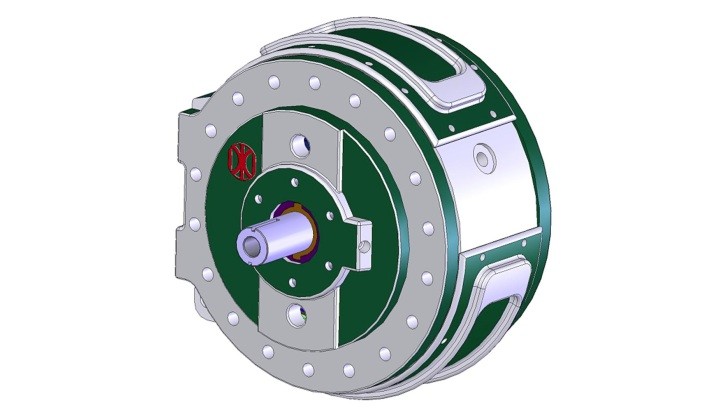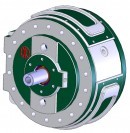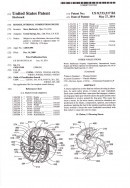Rotary engines go back as far as pre World War I aircraft; you know, those star-shaped engines sticking out through their front end. Eventually, they dropped all the pistons, but kept part of the principle and transformed into the Wankel rotary engine you know from NSU and Mazda.
Although they came with many advantages, high fuel consumption and CO2 emission led to their disappearance on production cars, with the last one being found on the Mazda RX8.
However, a new California-based company called GoTek Energy wants to resurrect the idea of a rotary engine with increased efficiency and power outputs. They already patented their idea and by the looks of it, their creation doesn’t resemble your typical Wankel.
Unlike Mazda’s rotary engine, the GoTek DynaKinetic, as they named it, uses a perfectly round housing with interior pivot pistons (rockers), arranged like some sort of a ninja start.
According to the company’s description, “as each rocker pivots, it rotates an outer crankshaft. Each outer crankshaft has a spur gear that engages a stationary ring gear. Spur gear rotation causes the gears and the outer crankshafts to revolve around the ring gear. This causes the rotor to rotate. As the rotor rotates, successive chambers are positioned at the intake, compression, ignition and exhaust positions. Igniting the fuel in the ignition position pushes the rocker inward to rotate the outer crankshaft associated with that rocker to cause the rotor to rotate.”
Holly sweet dinosaur juice, we understood almost nothing! And neither those schematic drawings you’ll find bellow are not clearing it out. We’ll have to wait for the company to post a slow motion animation with this DynaKinetic engine working...
Until then, you can learn what the company expects from the new engine when it will come out as a production model. They say it will have a thermal efficiency of 53 percent and weight 71% less than a similar output piston engine.
More power and around 60 percent more torque than a regular engine is on the list too and with 70 percent less moving parts, it will also come with a greater reliability.
Currently, their prototype measures 6-inches (15.2 cm) wide and 12-inches (30.4 cm) in diameter. It is the equivalent of a 1.5-liter classic engine and, as with the Wankel engine, it can be scaled and several units can be bolted together.
However, a new California-based company called GoTek Energy wants to resurrect the idea of a rotary engine with increased efficiency and power outputs. They already patented their idea and by the looks of it, their creation doesn’t resemble your typical Wankel.
Unlike Mazda’s rotary engine, the GoTek DynaKinetic, as they named it, uses a perfectly round housing with interior pivot pistons (rockers), arranged like some sort of a ninja start.
According to the company’s description, “as each rocker pivots, it rotates an outer crankshaft. Each outer crankshaft has a spur gear that engages a stationary ring gear. Spur gear rotation causes the gears and the outer crankshafts to revolve around the ring gear. This causes the rotor to rotate. As the rotor rotates, successive chambers are positioned at the intake, compression, ignition and exhaust positions. Igniting the fuel in the ignition position pushes the rocker inward to rotate the outer crankshaft associated with that rocker to cause the rotor to rotate.”
Holly sweet dinosaur juice, we understood almost nothing! And neither those schematic drawings you’ll find bellow are not clearing it out. We’ll have to wait for the company to post a slow motion animation with this DynaKinetic engine working...
Until then, you can learn what the company expects from the new engine when it will come out as a production model. They say it will have a thermal efficiency of 53 percent and weight 71% less than a similar output piston engine.
More power and around 60 percent more torque than a regular engine is on the list too and with 70 percent less moving parts, it will also come with a greater reliability.
Currently, their prototype measures 6-inches (15.2 cm) wide and 12-inches (30.4 cm) in diameter. It is the equivalent of a 1.5-liter classic engine and, as with the Wankel engine, it can be scaled and several units can be bolted together.




